artes / artworks
Puntos por montón
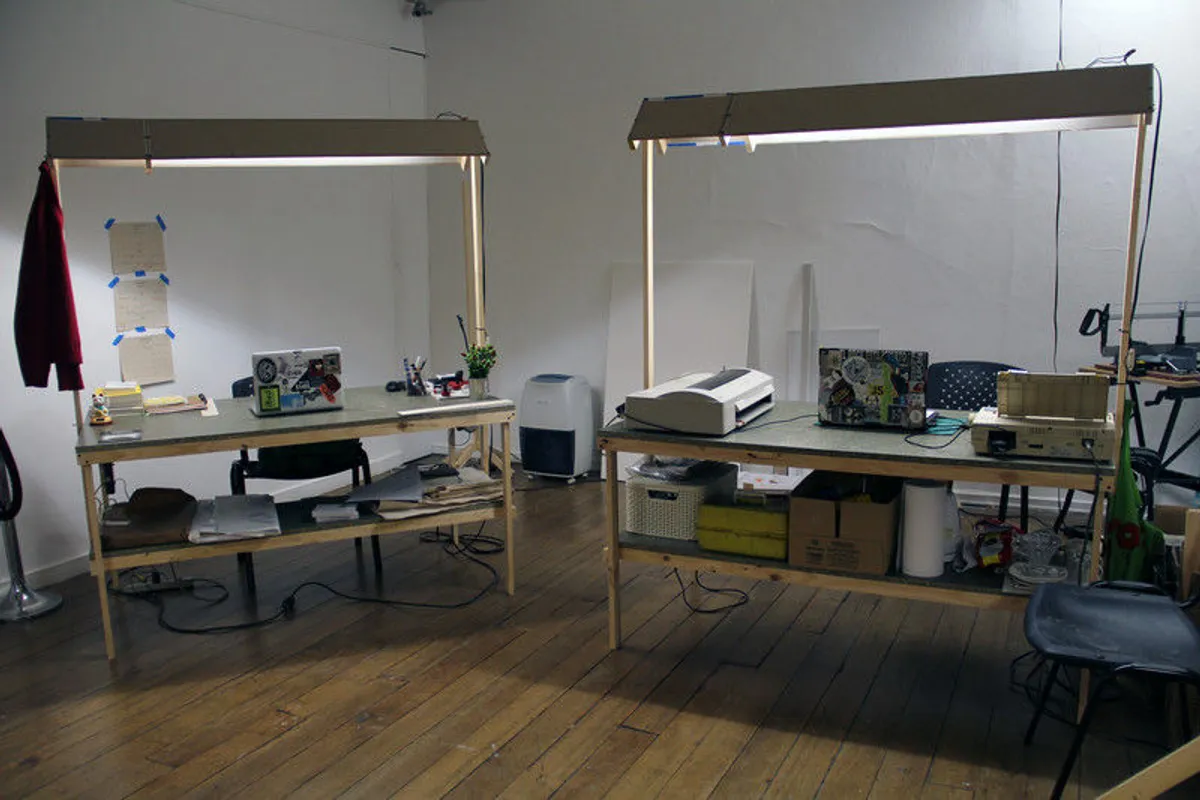
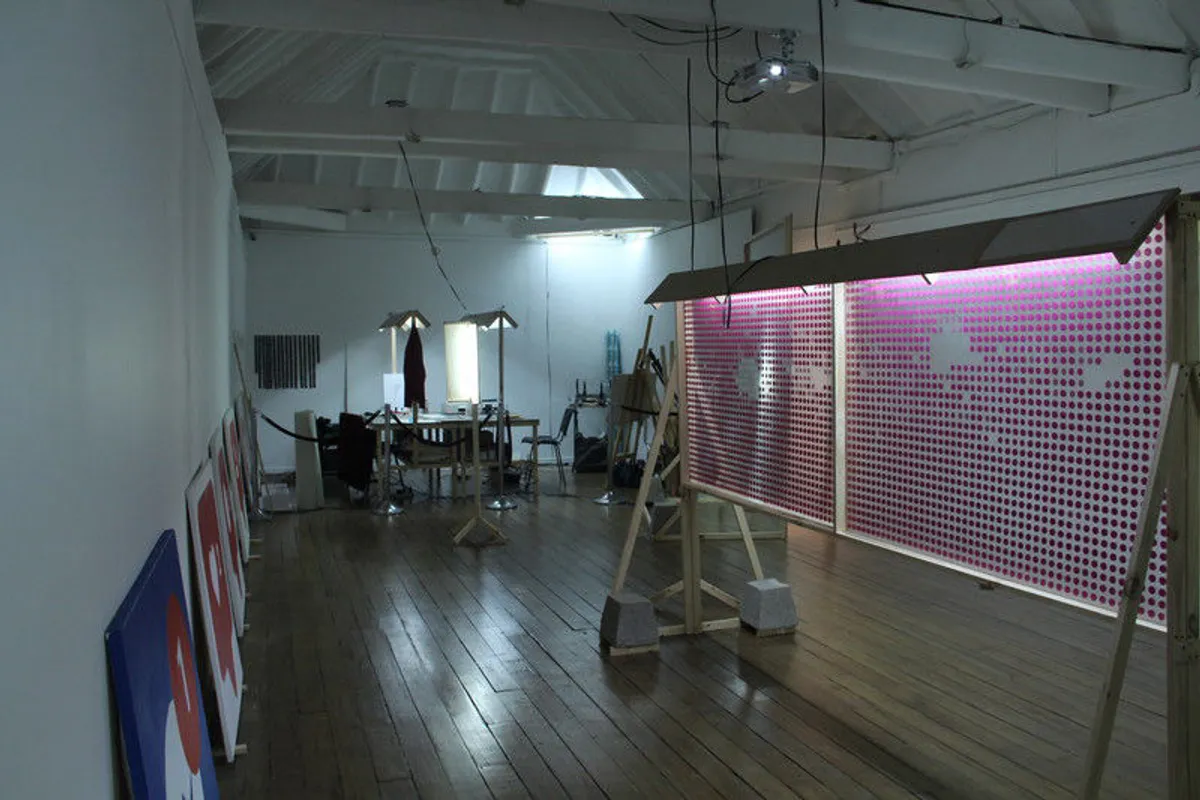

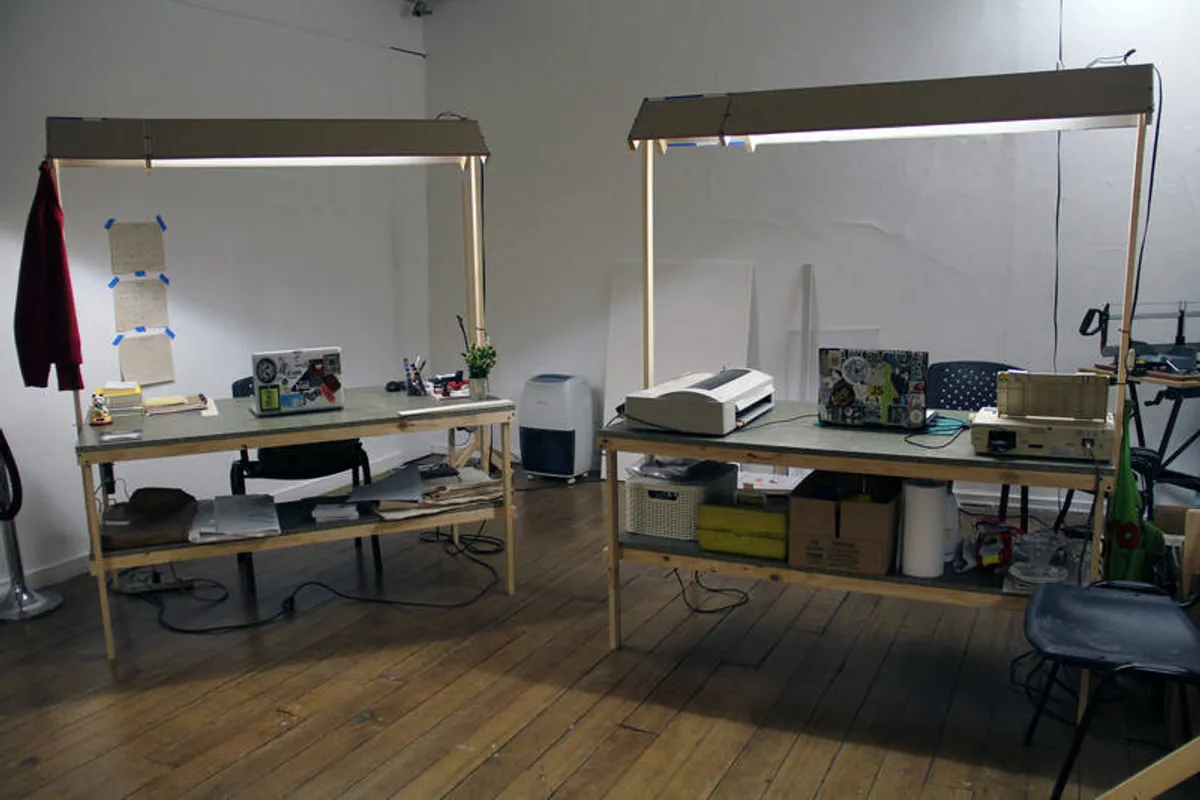

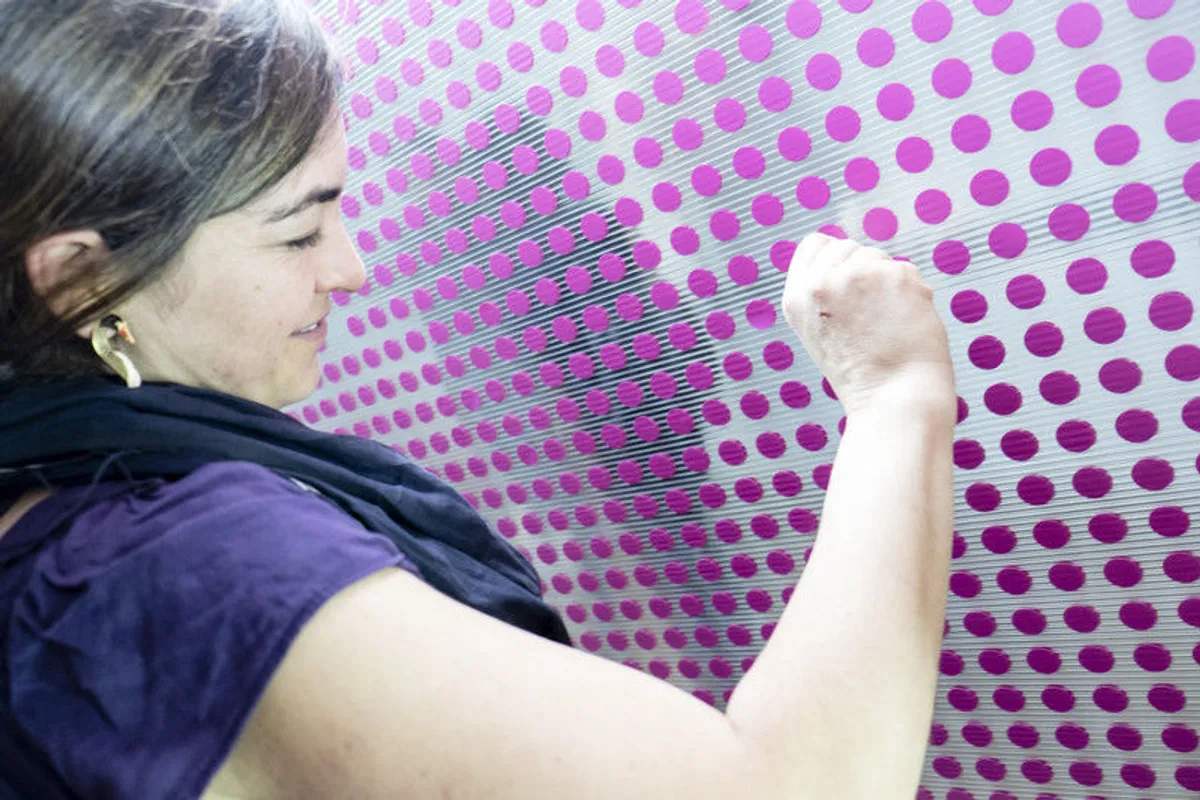
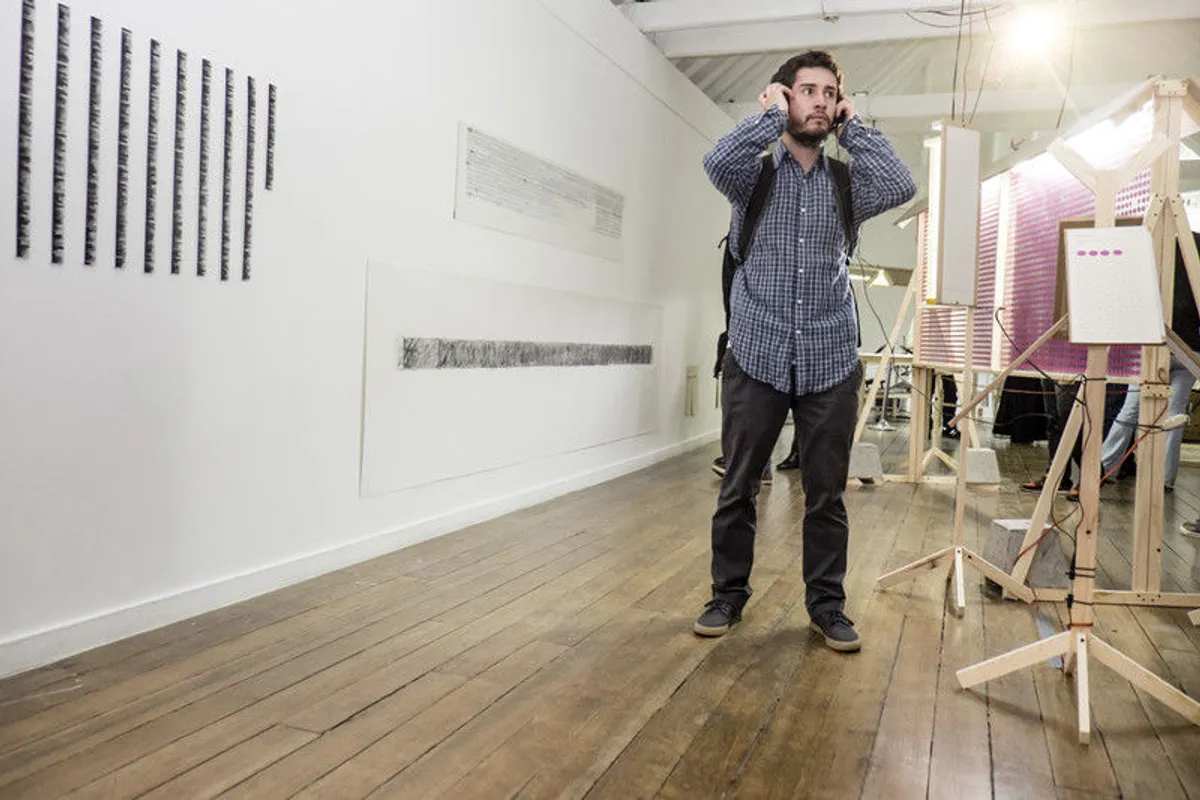


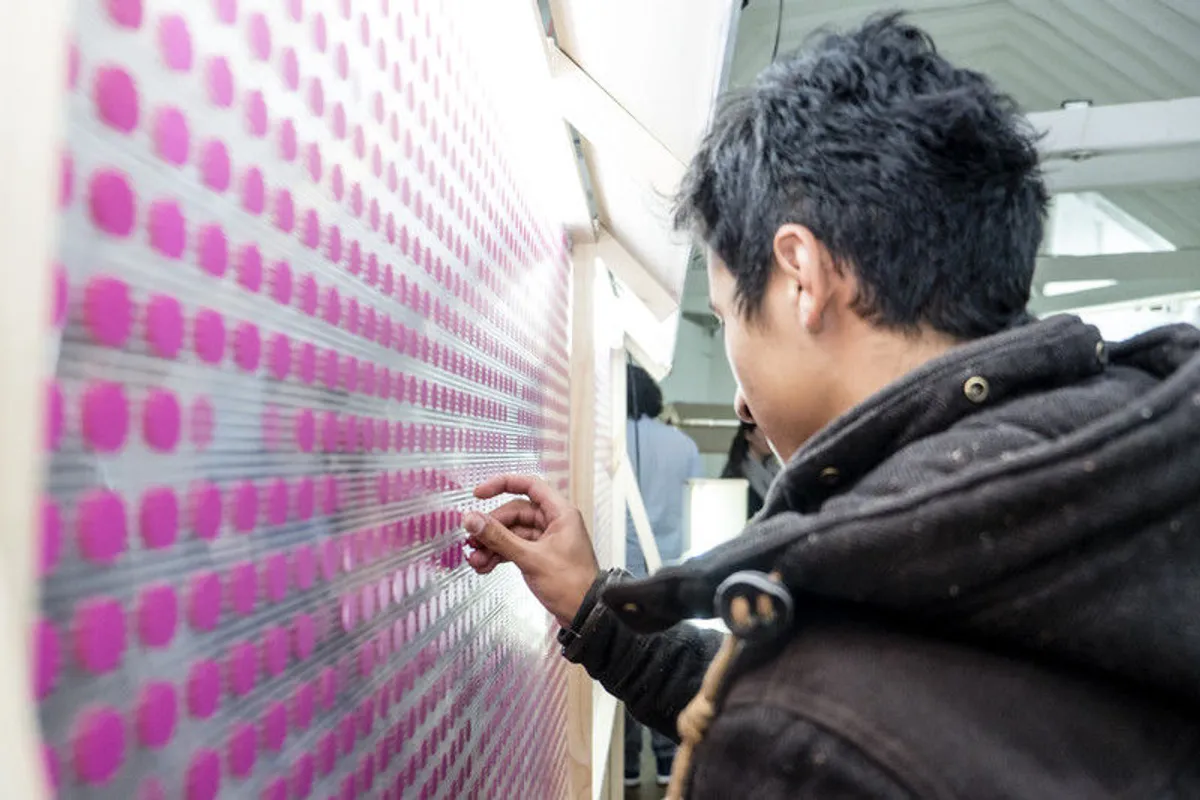

Gramática
Puntos por montón opera como un sistema generativo de otras obras de arte, dado que sigue unas reglas específicas y una gramática que garantiza su funcionamiento:
Todas las acciones serán públicas (incluyendo los procesos que generalmente no se muestran en las actividades creativas).
El espacio de exhibición se usará como espacio de producción.
La participación del público deberá ser activa.
La interacción del público con las piezas de la exhibición marcará la dirección tanto del medio a usar como del contenido de las siguientes obras a producir.
El ciclo de producción, exhibición y participación continuará a lo largo del tiempo asignado para la muestra.
Todas las acciones se documentarán en vídeo, fotografía y/o datos.
Puntos
Unos puntos autoadhesivos de color magenta ubicados en una pared se convierten en los principales dispositivos de interacción del público con la obra. Los puntos pueden ser retirados de la estructura para ser adheridos a las fichas técnicas de las piezas en exhibición, las cuales tienen un lugar demarcado para recibirlos. La interacción también puede ser remota, fotografías de las piezas son publicadas en redes sociales, cada interacción (likes, comentarios, etc.) se entenderán como un punto. Los puntos se contabilizan regularmente. Un reporte es producido y publicado luego del conteo, en el que se discrimina el número de puntos por pieza exhibida.
El gusto está materializado en los puntos. Estos dispositivos habitan los espacios comerciales del mundo del arte cotidianamente, intentan pasar desapercibidos pero su significado los hace relucir: Aquella obra que los porta está fuera del mercado, ya fue adquirida o está en proceso de serlo. El punto brilla pues en él se materializa nuestro fetiche sobre las mercancías, ese producto ya no podrá ser nuestro. En algunos eventos la acumulación de puntos parece garantizar calidad de las obras, nubes de puntos hipnotizan a los compradores, a más puntos más ventas en últimas más gusto sobre las obras.
Sus puntos, es decir su gusto, es un factor de alienación del trabajo del artista. Cada punto cuenta. Ya sea que la pieza le guste por el contenido o por que le combina con el color de las cortinas de la sala, su gusto es uno de los factores que guía el trabajo del artista que participa en el mercado del arte. La supervivencia del artista se debe en parte en la capacidad de despertar la mayor cantidad de gustos posibles. Los puntos son parte de los complejos mecanismos de generación de valor simbólico y económico en el mercado del arte.
El artista es un trabajador libre. Su tiempo, energía y medios de producción le pertenecen. El artista no es un ser alienado por el sistema. El artista nos recuerda a todos que es posible un trabajo libre, que nos permita crecer personalmente. ¡Larga vida a la Bohemia! Y a sus vidas excéntricas que nos permiten imaginar otra forma de vivir.
¡Aquí sus puntos si cuentan!
El artista se compromete a seguir la voz del público. Las obras que se produzcan en la sala serán las que al público le gusten. Un diverso grupo de piezas se producen previamente a la apertura de la muestra. Semanalmente las piezas se enfrentarán entre ellas: las que más puntos acumulen sobreviven y estimularán la producción de nuevas obras en el mismo camino. Las que menos puntos reúnan se retirarán del espacio expositivo. Al final del proceso solamente una serie de obras sobrevivirá.
La imagen del artista que persiste en el inconsciente colectivo es la del virtuoso creador de finales del siglo XIX y principios del XX. La realidad del trabajador del arte contemporáneo es extremadamente diferente. Los artistas deben responder a un diverso número de presiones que vienen de diferentes instancias del universo artístico: tendencias estilísticas que imponen coleccionistas y curadores, temáticas propuestas por agendas políticas materializadas en concursos de carácter público, tendencias del mercado local y global, son algunas de las fuerzas que se ejercen sobre el artista trabajador y que contribuyen a moldear las relaciones de poder que alienan el supuestamente libre trabajo del artista, quien hoy no es más que un proletario de la cultura y sus frágiles condiciones de trabajo no distan de las de otros obreros de sectores productivos diferentes.
Puntos por montón intenta visibilizar algunas de las estrategias que contribuyen a la precarización del trabajo artístico. La sala de exposiciones alberga el espacio de producción del artista. Los horarios de trabajo están controlados por medio de un sistema de tarjetas que sirven de registro de la hora de entrada y salida, cada una firmada por el guardia de turno. Hay metas preestablecidas, semanalmente una nueva versión de la exposición debe montarse reemplazando algunas de las obras preexistentes. Los puntos son tanto el dispositivo de interacción como el causante de la precarización del trabajo del artista. Cada punto contribuye a exigir al artista la creación de nuevas piezas en un sentido específico, además de permitir que el resto de elementos del sistema cobren sentido al ser la entidad que los pone en movimiento.
Grammar
Puntos por montón (Dots Per Lot) operates as a generative system of artworks, by following a particular set of rules and a specific grammar that guarantees its operating:
All the actions will be public (including the processes that are hidden in the creative activities).
The exhibition room will be used as the production space.
The participation of the public must be active.
The interaction of the audience with the pieces of the exhibition will guide the medium and content of the following artworks to be produced.
The cycle or production, exhibition, and participation will be continuous until the end of the show.
All the actions will be documented in video, photograph or data.
Dots
Some adhesive and magenta dots that are placed on a wall are the dispositive of interaction of the public with the work. The dots can be removed from the structure to be put on the artwork’s label in a marked space for it. The participation could be from outside the exhibition room, too. A comprehensive photographic registry of the pieces is posted online on two major social networks: Instagram and Facebook. Each engagement act (for instance a comment and other systems integrated into the platforms to indicate a like.) would count as a dot placed in the room. Each day a count of dots would be done. A detailed report then is produced and published with details of the dots for each exhibited artwork.
The taste it is materialized through the dots. These devices inhabit the commercial spaces of the art world; trying to be unnoticed, but their meaning makes them shine: the artwork that carries one it is outside of the market, it was bought or is in the process to be. The dazzling dot is the materialization of our fetish over the commodities, the one that has the dot is a product that can not belong to us. Sometimes, clusters of dots appear to indicate quality; those clusters hypnotize buyers; more dots, more sells, more taste.
Your dots, that is to say, your taste, it is an alienation factor of the artist labor. Each dot counts. It does not matter if you actually like the artwork by its concept or if it matches the color of your living room curtains, your taste is one of the factors that guides the work of the artist that moves within the market. The survival of the artist depends on, the capacity to spawn various types of tastes. Dots are part of the complex mechanisms for symbolic and economic value generation on the art market.
Artists are free laborers. Their time, energy and means of production belong to them. The artists' work is not alienated. They remind us that it a free labor is possible, which allows us to grow personally. Long life to the bohemian and eccentric lifestyle! That makes it feasible to imagine another way of living.
Here your dots do count!
The artist undertakes the responsibility to follow the voice of his public. The artworks produced in the room will be the ones the visitors would like. A diverse corpus of pieces is created before the opening of the exhibition. Each week the exhibited artworks will fight between them: only the ones who accumulate enough dots will survive and serve to create new pieces. The ones with lesser dots count will be retired from the exhibition space. At the end of the process, only one series of artworks will survive.
The image of the artist who lives in the collective mind is the one in which the artist is a virtuous creator of the end of the 19th century and beginning of the 20th century. The reality of the laborer of the contemporary art is entirely different. The artist must answer to several number of pressures from various institutions of the artistic realm. Tendencies promoted by collectors and curators; themes proposed by political agendas and materialized in public founded contests. Trends in the local and international markets are some examples of the pressures that an artist today must deal with, which contribute to shaping the relations of power that alienate the allegedly free labor of the artist. Artists today are proletarians of the culture, and their working conditions are not far beyond from the other alienated workers of other productive sectors.
Puntos por montón tries to make visible some of the strategies that contribute to the precarization of the artistic work. The exhibition room is also the studio of the artist. The audition of the working hours uses a system of stamped cards signed by the show guard that registers the entrance and living time of the artist. There are some short-term goals, each week a new version of the show must be set up by removing existing pieces and creating new ones. The dots are the apparatus of interaction and also the tool that contributes to the precarization of the artistic labor. Each dot demands the creation of a new piece in a specific way and also allows the remaining elements of the system to produce meaning because they are the entities that put them on movement.